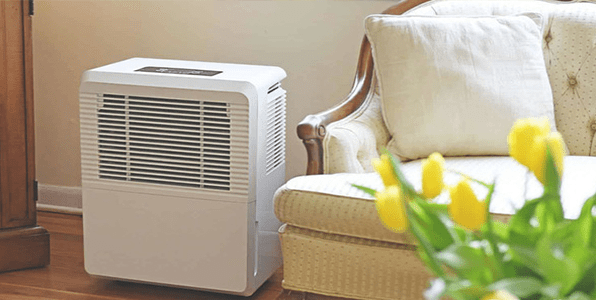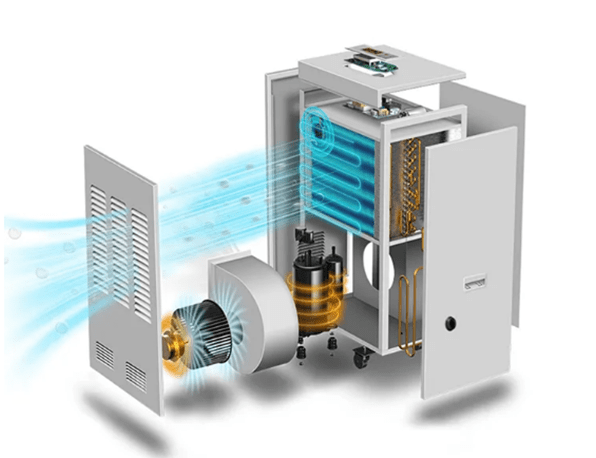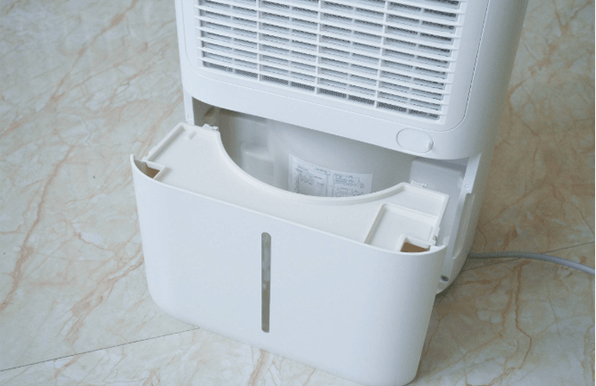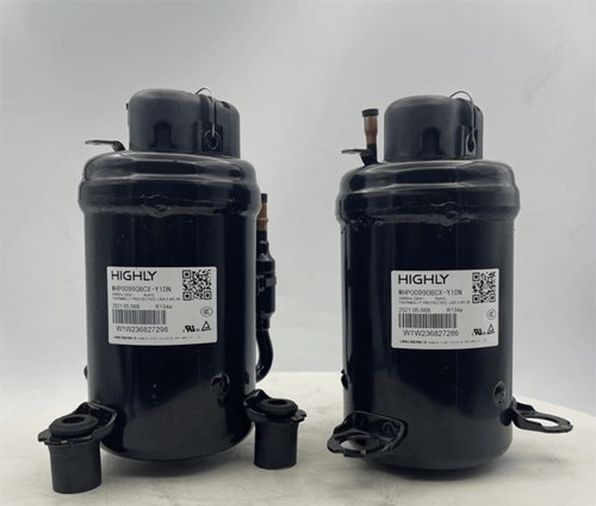
Figure 1: Compressor dehumidifier.
A dehumidifier is an essential appliance for maintaining a comfortable and healthy indoor environment by reducing excessive humidity. However, if you notice that your dehumidifier's compressor is running hot, it can be a cause for concern.
In this article, we will explore the reasons why a dehumidifier compressor may become hot and provide you with possible fixes to address the issue. By understanding the underlying causes and taking appropriate measures, you can help ensure the efficient and reliable operation of your dehumidifier.
1. Reasons for Dehumidifier Compressor Hot
1.1 Inadequate Airflow
One of the primary reasons for a hot dehumidifier compressor is inadequate airflow. The compressor generates heat as it works. If there is insufficient airflow around the compressor, the heat buildup can cause it to become excessively hot. Here are some factors to consider:
1.Blocked Air Vents
Make sure that the air vents on the dehumidifier are not blocked by obstructions such as furniture, curtains, or dust accumulation. Blocked vents restrict the airflow, leading to poor heat dissipation.
2.Clogged Air Filter
A dirty or clogged air filter can impede the intake of air, reducing airflow through the dehumidifier. Regularly clean or replace the filter according to the manufacturer's recommendations to maintain proper airflow.
3.Improper Placement
Ensure that the dehumidifier is placed in a well-ventilated area, away from walls or other objects that may impede the circulation of air. This allows for sufficient airflow to dissipate the heat generated by the compressor.

Figure 2: Compressor dehumidifier structure.
1.2 Dehumidifier Overworking
Another reason for a hot dehumidifier compressor is overworking the appliance. Operating the dehumidifier under conditions beyond its capacity can strain the compressor and cause it to overheat. Consider the following factors:
1.High Humidity Levels
If the humidity levels in your space are extremely high, the dehumidifier may have to work continuously to maintain the desired humidity level. This prolonged operation can result in an overheated compressor. In such cases, consider using additional dehumidifiers or resolving the excess moisture issue in your surrounding environment.
2.Oversized Space
Using an undersized dehumidifier for a large or open area can overburden the compressor, leading to overheating. Ensure that the dehumidifier's capacity matches the square footage of the space to avoid straining the compressor.
3.Continuous Operation
Running the dehumidifier continuously without allowing it sufficient breaks can also cause the compressor to become excessively hot. Refer to the manufacturer's guidelines or set appropriate intervals for the dehumidifier to cycle on and off, giving the compressor time to cool down.
1.3 Faulty Components
A malfunctioning or faulty component in the dehumidifier can contribute to a hot compressor. Here are some aspects to consider:
1. Fan Motor Issues
The fan motor plays a crucial role in circulating air across the compressor. If the motor is not functioning optimally or has developed faults, it can hinder proper airflow and result in a hot compressor. Inspect the fan motor for any signs of damage or malfunction, such as unusual noises or inadequate air movement.
2. Refrigerant Leaks
A refrigerant leak can disrupt the cooling process within the dehumidifier, causing the compressor to work harder and generate excess heat. Look for signs of refrigerant leaks, such as reduced cooling efficiency, frost buildup, or hissing sounds. If you suspect a refrigerant leak, it's advisable to contact a professional technician to identify and fix the issue.
3. Compressor Problems:
Internal compressor problems, such as faulty valves or motor issues, can also contribute to overheating. If you have assessed other possible causes and the compressor continues to run hot, it may require professional inspection and repair.

Figure 3: Components of a compressor dehumidifier.
2. Troubleshooting and Fixes of Dehumidifier Compressor Hot
To address a hot dehumidifier compressor, consider the following fixes:
1. Ensure proper airflow by clearing the vents and cleaning or replacing the air filter regularly.
2. Place the dehumidifier in a well-ventilated area, away from obstructions that hinder air circulation.
3. Monitor and adjust the humidity levels to prevent overworking the dehumidifier. Use additional units if necessary or address the root cause of high humidity in your space.
4. Check for signs of faulty components, such as the fan motor or refrigerant leaks. Seek professional assistance for repairs as needed.
5. Follow the manufacturer's guidelines regarding operation and maintenance practices for your specific dehumidifier model.
3. Frequently Asked Questions about Compressor Dehumidifier
3.1 Can You Drink Water from a Dehumidifier?
No, it is not recommended to drink water collected from a dehumidifier. The water collected in the dehumidifier's reservoir is typically not filtered or treated for consumption. It may contain impurities, such as dust, allergens, mold spores, or potentially harmful microorganisms.
Additionally, dehumidifiers are not designed or intended for producing potable water. If you need drinking water, it is safer to obtain it from a reliable source, such as tap water that has been properly treated or bottled water.

Figure 4: Compressor dehumidifier water tank.
3.2 Is the Compressor on a Dehumidifier Supposed to Get Hot?
Yes, it is normal for the compressor on a dehumidifier to get hot during operation. The compressor is the main component responsible for removing moisture from the air, and as it works, it generates heat. The heat produced is a byproduct of the compression process and indicates that the dehumidifier is actively removing moisture from the environment.
However, if the compressor becomes excessively hot to the touch or if it is accompanied by other issues like reduced efficiency or unusual noises, it may indicate a problem that requires attention. In such cases, it is advisable to consult the manufacturer's guidelines or seek professional assistance to diagnose and address the issue.
3.3 How Do I Know If My Dehumidifier Compressor is Bad?
There are a few signs that may indicate a bad compressor in a dehumidifier.
First, if the compressor is not running at all or if it repeatedly turns on and off without effectively removing moisture from the air, it could be a sign of a faulty compressor.
Additionally, a compressor that is making unusual noises like grinding, hissing, or clicking sounds may indicate internal damage.
Another sign is if the dehumidifier is not adequately cooling or if it is not extracting moisture as efficiently as it used to.
If you notice any of these issues, it is recommended to consult a professional technician to assess and potentially replace the compressor if necessary.

Figure 5: Compressor for dehumidifier.
3.4 How to Clean a Dehumidifier?
To clean a dehumidifier, follow these steps:
1.Turn off and unplug the dehumidifier from the power source.
2.Remove the air filter and gently clean or replace it according to the manufacturer's instructions.
3.Use a soft brush or cloth to wipe down the exterior of the dehumidifier, removing any dust or debris.
4.Mix a solution of mild soap and water.
5.Dampen a cloth or sponge with the soapy solution and clean the interior surfaces of the dehumidifier, including the reservoir and coils. Avoid getting the electrical components wet.
6.Rinse the cloth or sponge with clean water and wipe away any soap residue.
7.Allow all the components to air dry thoroughly before reassembling the dehumidifier and plugging it back in.
Remember to always consult the manufacturer's instructions for specific cleaning guidelines for your particular model of dehumidifier.
4. Conclusion
A hot dehumidifier compressor may indicate underlying issues that require attention. By understanding the reasons behind a hot compressor and implementing the suggested fixes, you can help ensure the efficient and safe operation of your dehumidifier. Regular maintenance, proper placement, and addressing any faulty components will contribute to a well-functioning dehumidifier that effectively controls humidity levels in your space, providing a comfortable and healthy living environment.
Related Info
Why Is My Portable Ice Maker Not Making Ice? Troubleshooting TipsHow Long Does It Take to Make Ice Cubes? Answers to All Your Ice-Making Questions
Samsung Refrigerator Ice Maker Not Working: Common Causes and Solutions
Cold Storage Warehouse: Everything You Need to Know
Refrigerated Truck: Everything You Need to Know


